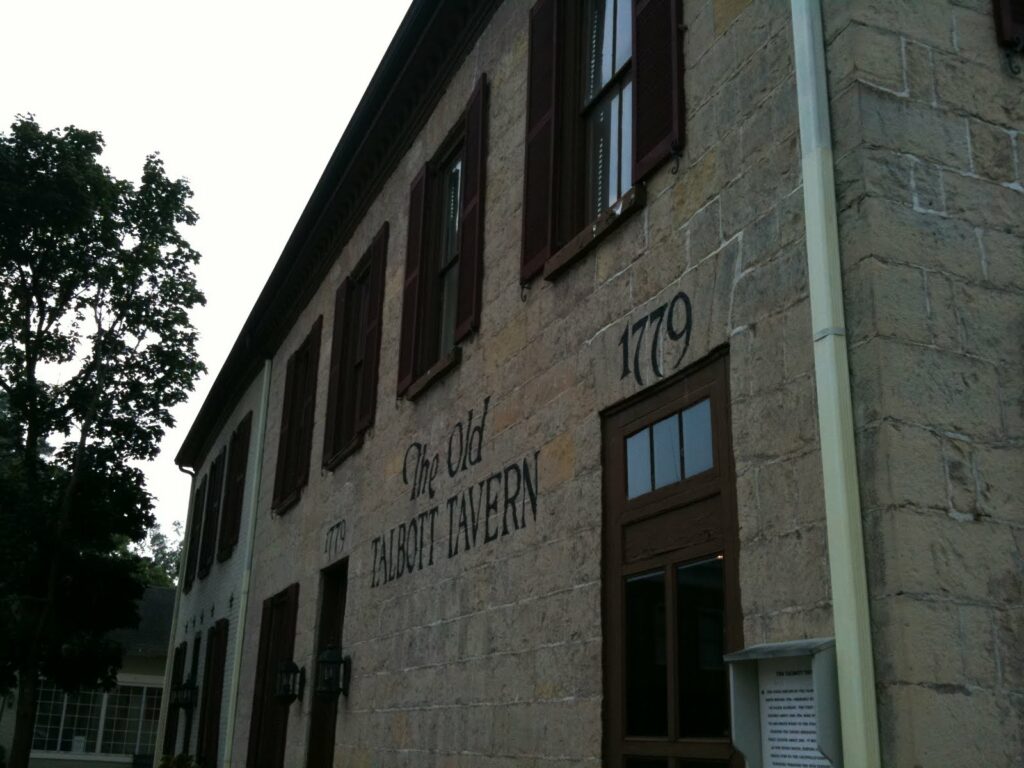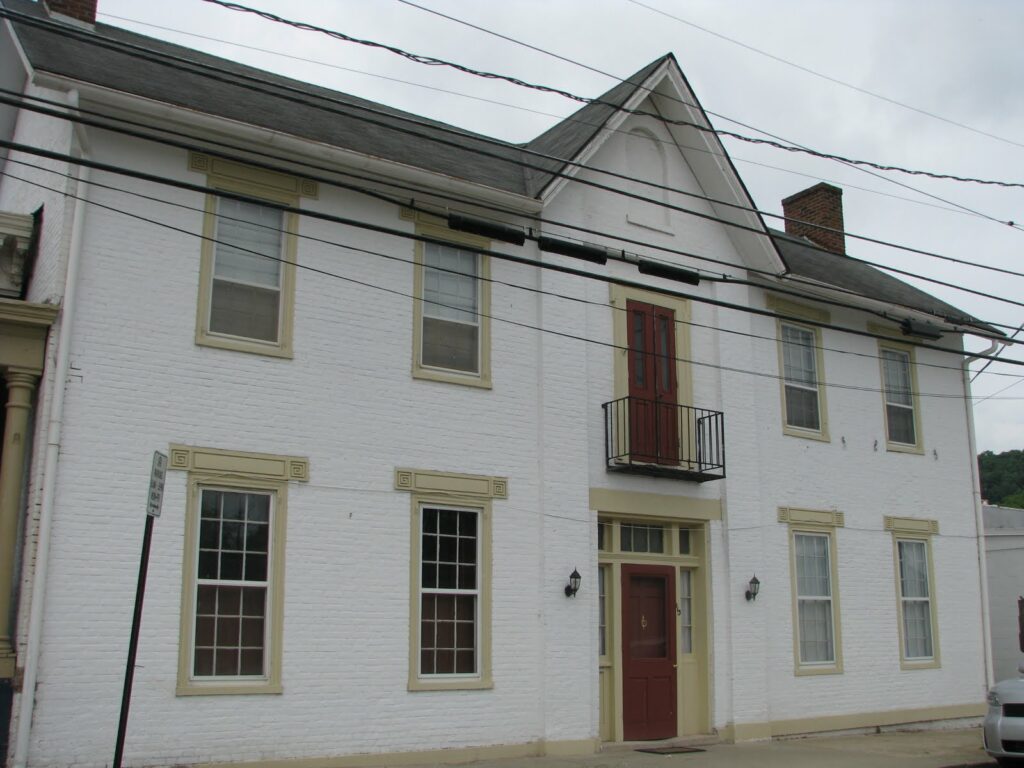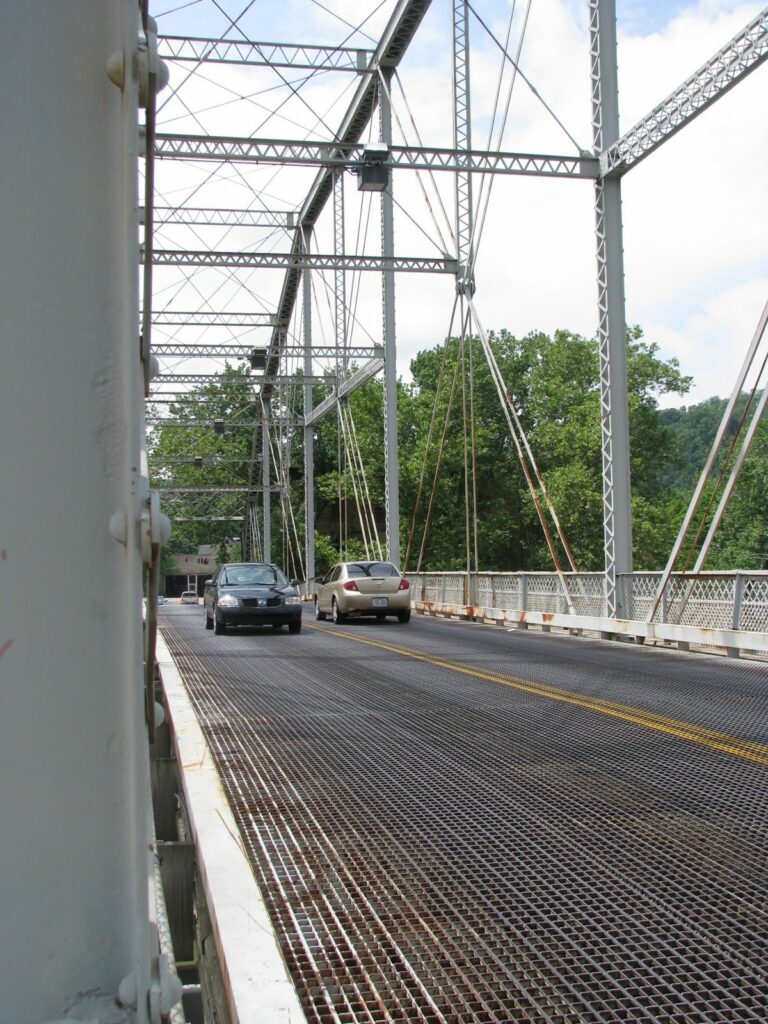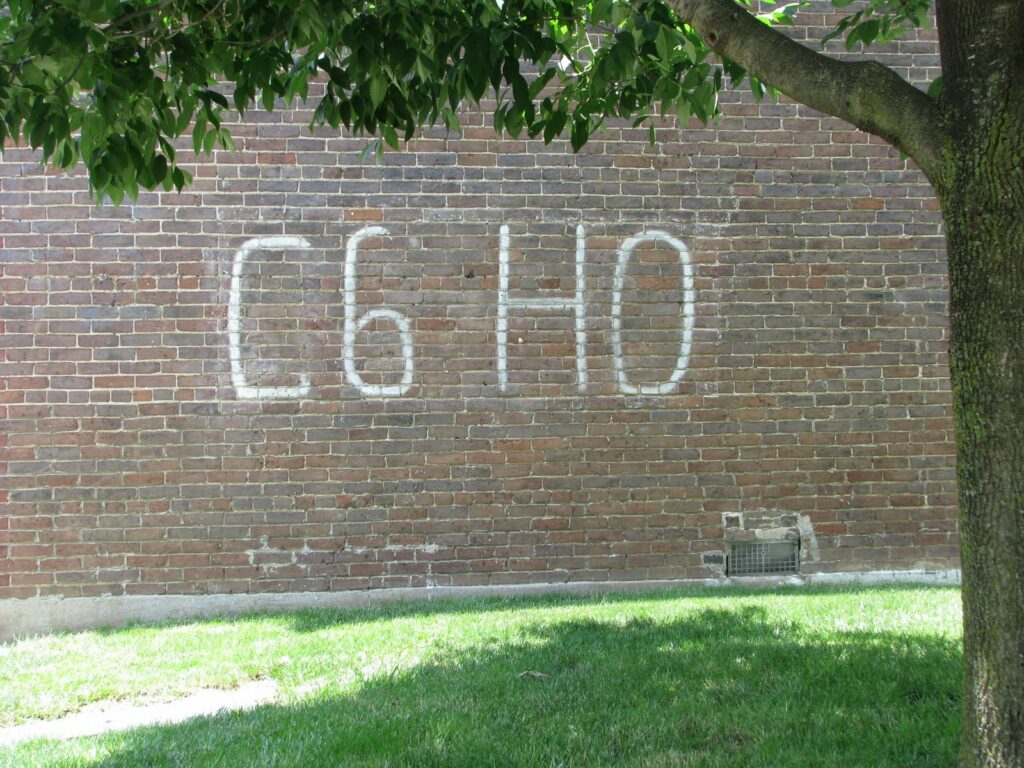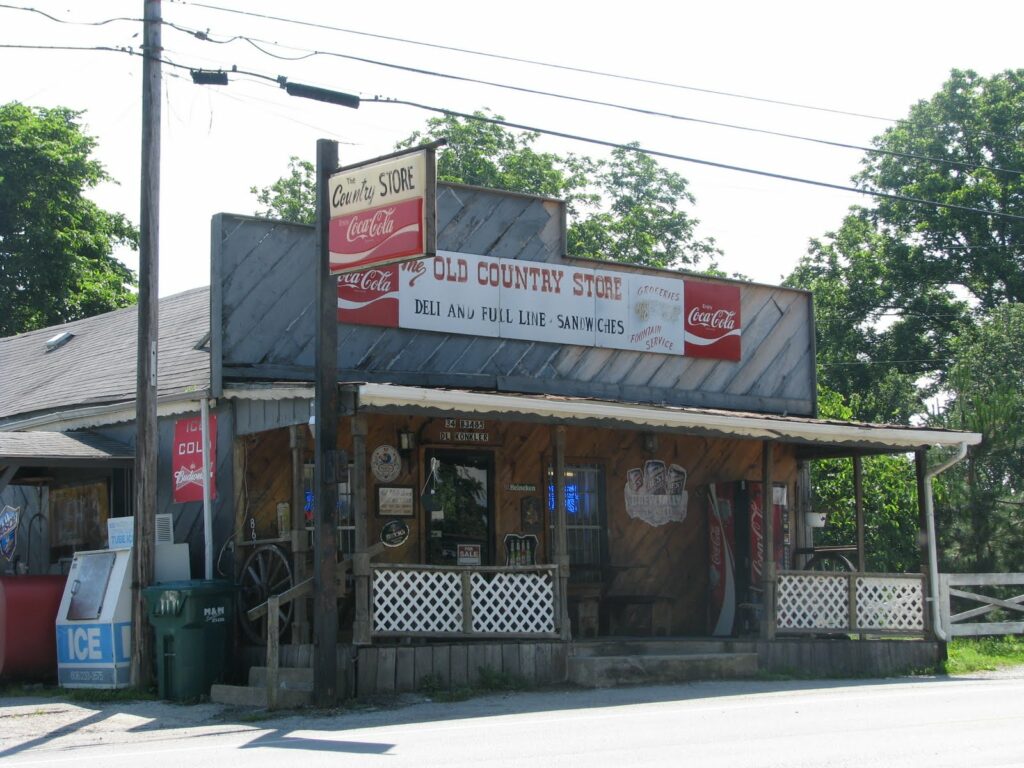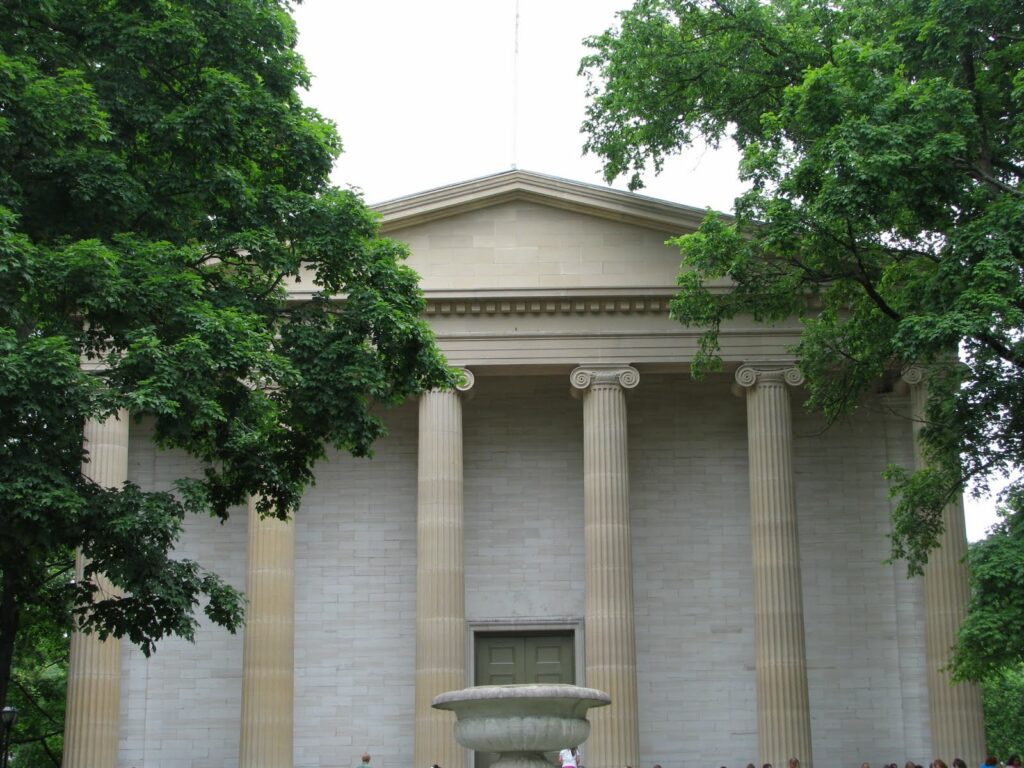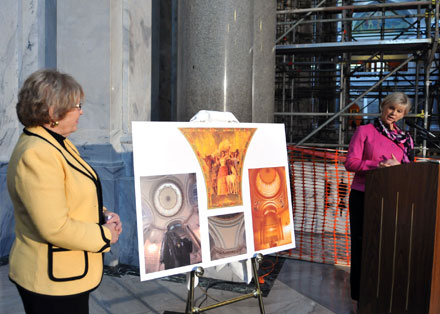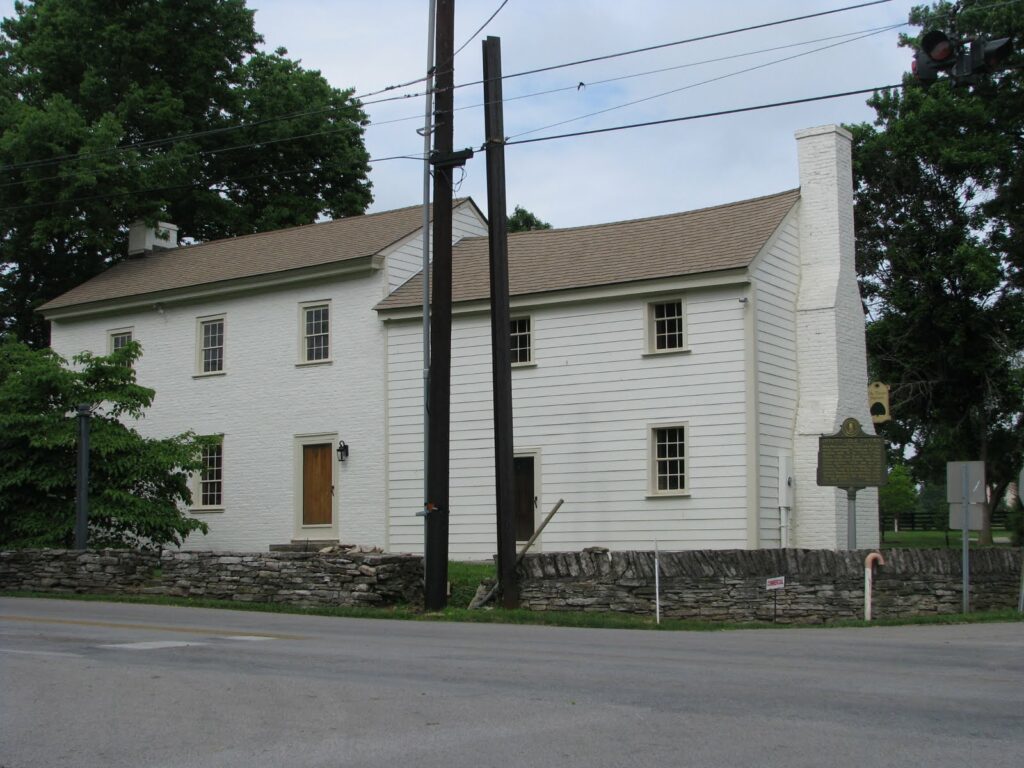 The Offut-Cole Tavern is located at the corner of Old Frankfort Pike and US-62 in Midway. According to the historic marker, the log portion of the structure dates to the 1780s-1790s. Major John Lee, a founder and early leader of Woodford County, lived here and began its tradition as a tavern. Leased to John Kennedy and William Dailey, it grew in fame as a stagecoach stop (midway) along the toll road from Lexington to Frankfort.
The Offut-Cole Tavern is located at the corner of Old Frankfort Pike and US-62 in Midway. According to the historic marker, the log portion of the structure dates to the 1780s-1790s. Major John Lee, a founder and early leader of Woodford County, lived here and began its tradition as a tavern. Leased to John Kennedy and William Dailey, it grew in fame as a stagecoach stop (midway) along the toll road from Lexington to Frankfort.
A separate tavern located on Cole’s Road (now known as Leestown Road) was known as Cole’s Bad Inn. Owned by Richard Cole, Sr. and nicknamed “Little Sodom,” it can only be imagined what there occurred. English journalist Fortesque Cuming visited both Dailey’s Tavern and Little Sodom in 1807 as he traveled to and from Frankfort by Lexington. Cuming wrote:
Quitting Frankfort, we took Coles Road, a different route to that by which we had come, which brought us after riding ten miles mostly through woods, to Cole’s who keeps an Inn on this road in opposition to Dailey, on the Old Frankfort-Lexington Turnpike. But any traveler who has once contrasted the rough vulgarity and the badness of his table and accommodations, with the taste, order, plenty and good attendance of his mulatto competitor will never trouble Mr. Cole a second time, especially as there is no sensible difference in the length of goodness of the roads, and that Mr. Bailey’s is through a generally much better settled county.
Little Sodom burned in 1811. Cole, Jr. bought his father’s former competitor’s tavern and named Major Lee’s old tavern the Black Horse Inn. (Side Note: Cole, Jr’s great-grandson was the infamous Jesse James.)
The tavern also served as a tollhouse for the company owning the Frankfort Pike from Lexington. When in the early 1850s, the road from Midway to Versailles (now US-62) was constructed, the tavern became a dual tollhouse taking tolls from travelers from all directions.
A tavern of many names. Black Horse Inn. Lee-Cole Tavern. Lee’s Tavern. Dailey’s Tavern. But what of Offut? The historic marker suggests that Horatio Offut leased the tavern from Major Lee (or his widow) and constructed the brick section, but genealogical researchers suggest that no leases or deeds were ever recorded to Mr. Offut.
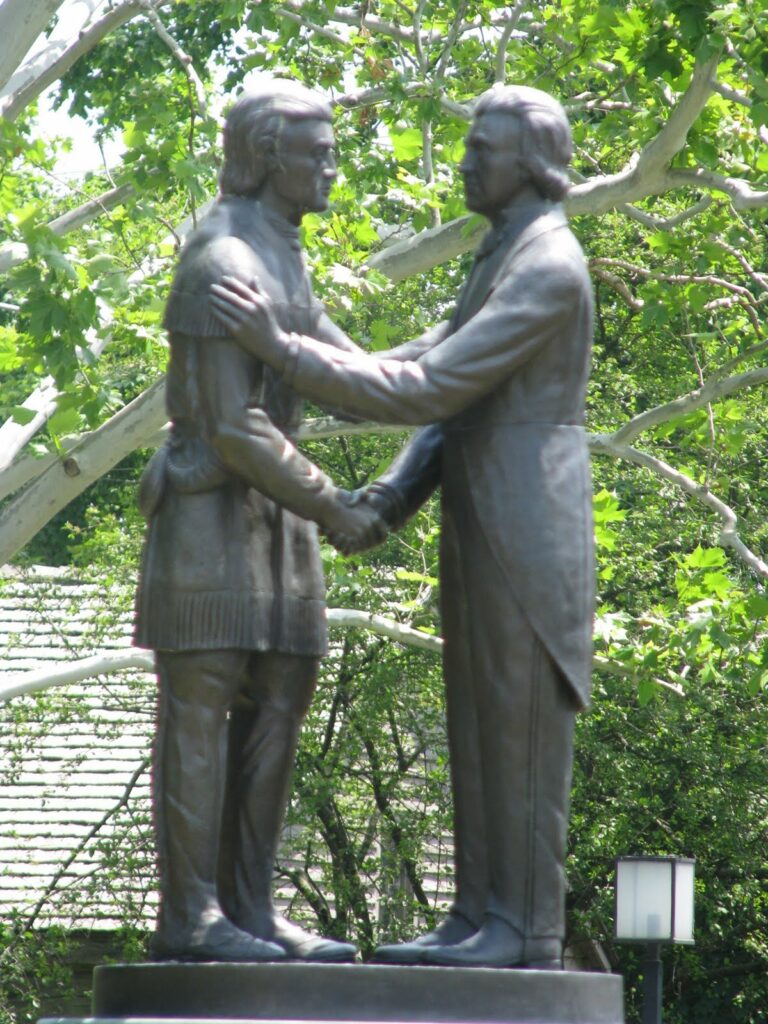 The state seal of Kentucky is memorialized in bronze at the Governor’s Circle in the Constitution State Park (Danville). Around the seal is a depiction of each of Kentucky’s governors.
The state seal of Kentucky is memorialized in bronze at the Governor’s Circle in the Constitution State Park (Danville). Around the seal is a depiction of each of Kentucky’s governors.
